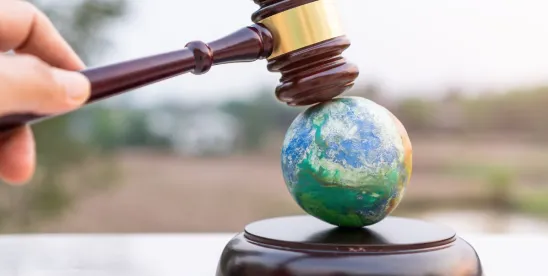For the second time, the Ninth Circuit appellate court has dismissed the case. While this dismissal is likely to be the final word in Juliana, litigation related to climate change will continue under various theories for the foreseeable future.
Case Background
Juliana has attracted significant attention (from us, here and here) because of the plaintiffs’ ages, widespread conversations around climate change, and the years the matter has been pending. The children claimed that the United States has violated their “right to a stable climate system that can sustain human life” and asked the courts to compel it to take more drastic action. In a previous ruling, the Ninth Circuit had found the plaintiffs lacked standing because the remedy they sought was beyond the court’s power to provide. Since then, an Oregon district court ruled that declaratory relief — stating what the law is, rather than what the government needs to do to remedy the issue — remained available to plaintiffs and could potentially circumvent the standing issues identified by the Ninth Circuit. (For more, see the Oregon district court’s April 19 ruling here).
On May 1, the Ninth Circuit entered an order addressing the newest issue in the case. It granted a petition by the United States that precluded an Oregon district court from allowing plaintiffs to amend their complaint to circumvent the earlier Ninth Circuit ruling. The order notes that district courts must “implement both the letter and the spirit of the mandate, taking into account the [prior] opinion and the circumstances it embraces.” (Emphasis in original). In the Ninth Circuit’s view, the spirit of the prior decision compelled the dismissal of Juliana in its entirety.
This mandamus from the Ninth Circuit comes as no surprise. Indeed, the US Supreme Court highlighted mandamus as a potential remedy to the government over five years ago. In its ruling, the Ninth Circuit again held that declaratory relief was “not substantially likely to mitigate the plaintiffs’ asserted concrete injuries” and that the plaintiffs needed to look to “the political branches to provide the relief” they sought.
What’s Next?
This decision may signal the end to this litigation because it is unlikely that the Juliana plaintiffs will seek Supreme Court review of the Ninth Circuit’s decision.
But climate change litigation will continue based on different legal theories, including the following:
- State Tort Law Theories
Various state courts continue to wrestle with climate-change related litigation with new cases being filed frequently. (See here for a longer discussion.) - Constitutional Theories
Various public governance related theories, including public trust, like Juliana, continue to percolate through many courts. Recent public governance-type decisions include the recent decisions in Held v. State of Montana (see here); the RISE St. James v. LDEQ case addressing whether the Louisiana state constitution’s embrace of the public trust doctrine compels consideration of environmental justice issues (for more, see here on the lower court decision and here, discussing the appeal); and the human-rights focused decision by the European Court of Human Rights in Verein KlimaSeniorinnen Schweiz and Others v. Switzerland (see here). - “ESG-Related” Theories
Finally, various climate change related cases addressing issues commonly classified under the “ESG” rubric continue to develop. (For a detailed discussion of these, see here and here). Litigation in this space will likely increase as carbon-related corporate disclosure mandates come online.




 />i
/>i
